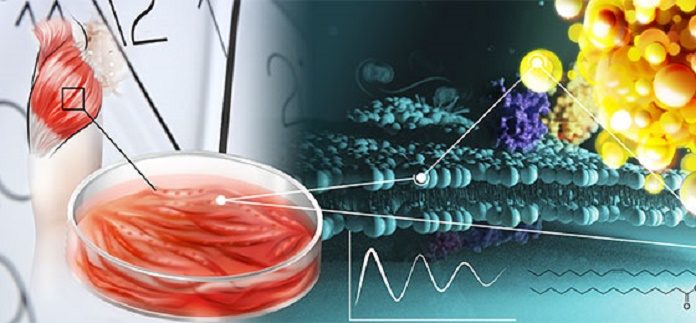Biological clock, an inherent timing mechanism in a living system, ticks everywhere throughout our body. It is a mechanism in the brain that synchronizes all the auxiliary ones in different organs. According to a new study, such a circadian clock is at work in our muscles too.
The research conducted by the University of Geneva (UNIGE), Switzerland along with the University of Bath, the Université Claude Bernard in Lyon, EPFL, the University of Surrey, and the Nestlé Institute of Health Sciences suggests that this circadian clock in our muscles plays a vital role in managing different types of fat(lipids).
The lipids in our muscles vary during the day, sometimes they favor one over another. Scientists tested the hypothesis with volunteer subjects. They synchronized every subject’s master clock by asking them to obey to a daily eating and sleeping routine one week prior to the experiment.
After every 4 hours, scientists took the small sample of thigh muscle tissue and identified its lipid composition.
Howard Riezman from UNIGE said, “We observed a clear correlation the muscle cell’s lipid composition and the time of day. As the combination of lipids varied substantially from one individual to another, we needed further evidence to corroborate these findings.”
Scientists then cultivated human muscle cells in-vitro experiment. They then synchronized the cells using a signal molecule normally secreted in the body. A periodic fluctuation took place within cell’s lipid composition. If disrupting the clock mechanism by inhibiting the responsible genes, they found the variations in the lipids were mostly lost.
First author Ursula Loizides-Mangold said, “We have clearly shown that this variation of lipid types in our muscles is due to our circadian rhythm. But the main question is still to be answered: what is this mechanism for?”
According to scientists, this biological clock in the muscle could help in regulating the cells’ sensitivity to insulin. Lipids also influence the molecules’ ability to travel into and out of the muscle cells. Changes in its arrangement could tune the muscle’s affectability to the hormone and its capacity to take in glucose.
The study also shows how the perturbations in the clock lead to the development of type 2 diabetes. It happens due to the low sensitivity of the muscle to the insulin that causes insulin resistance, also called a cause of type 2 diabetes.
Charna Dibner, the co-director of the study, “Studies strongly suggest a link between circadian clocks, insulin resistance, and diabetes development. If we establish a link between circadian mechanisms and type 2 diabetes via lipid metabolism, this could have important therapeutic implications.”
“Thanks to our new tools for studying human muscle cellular clocks in vitro, we now have the possibility to investigate this hypothesis in our next study.”
